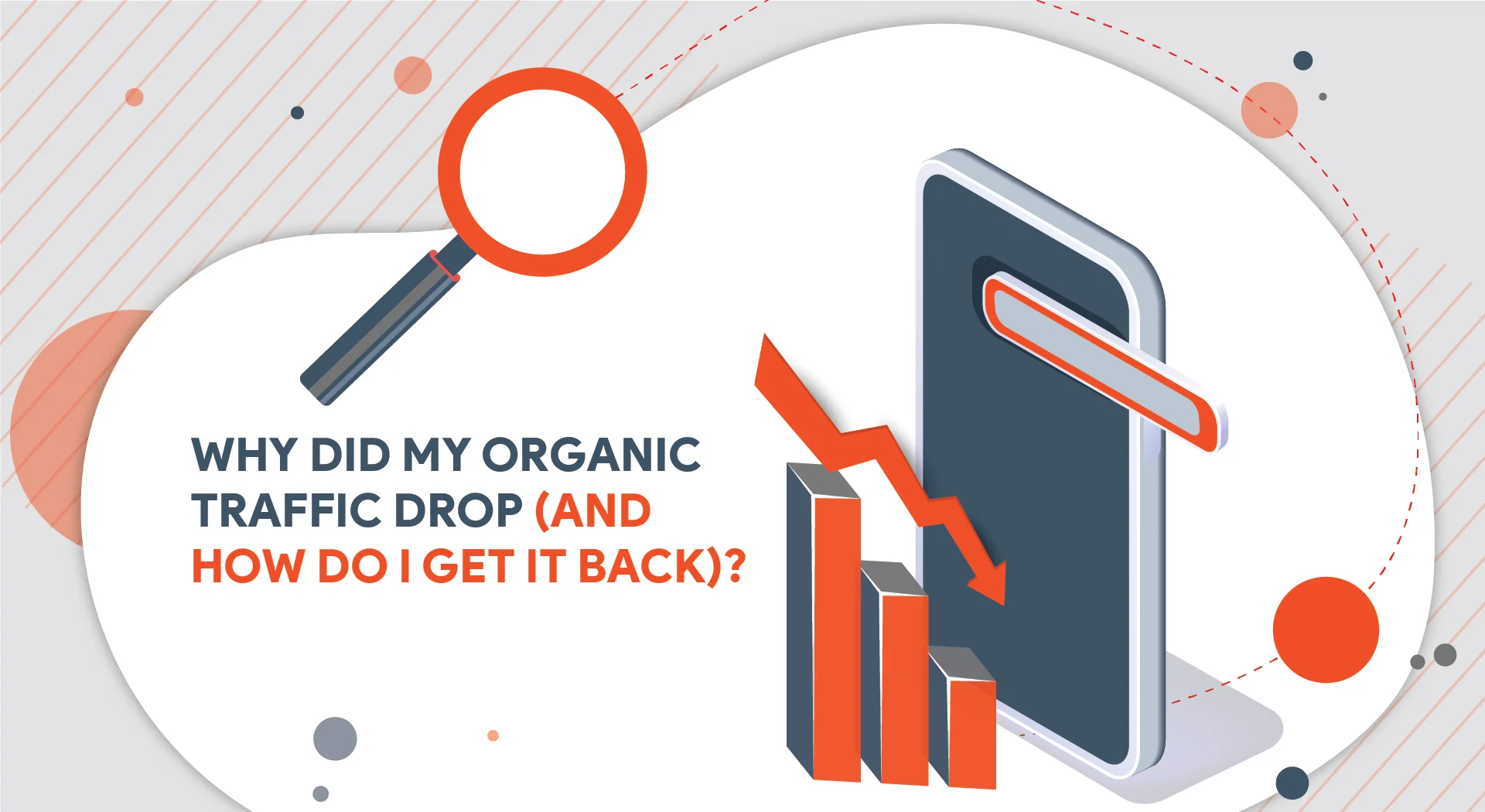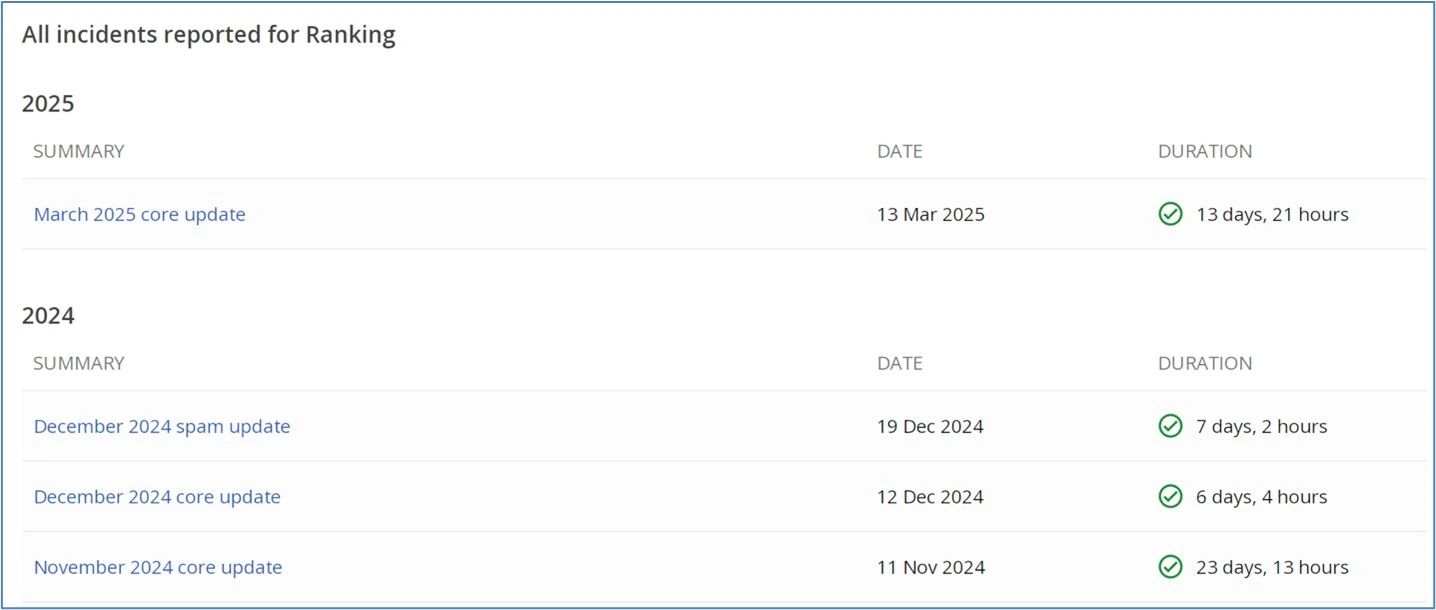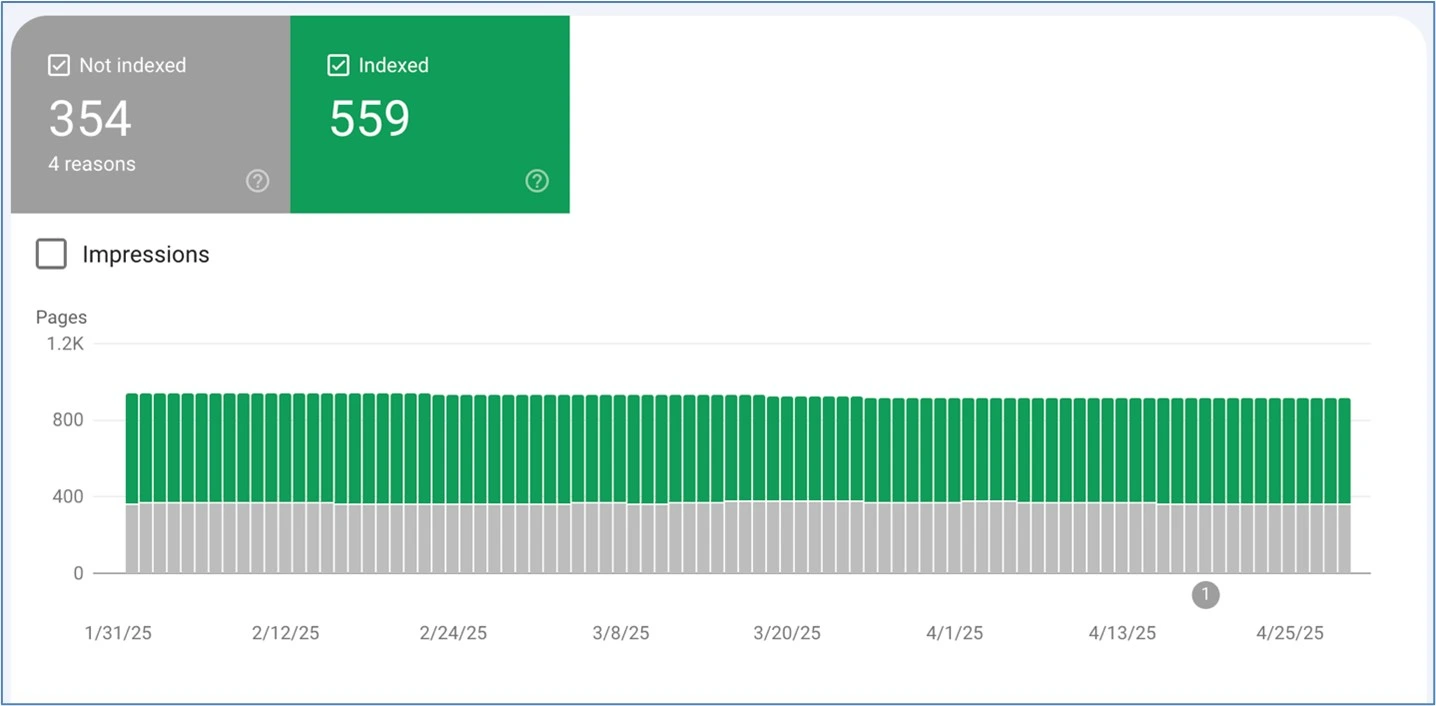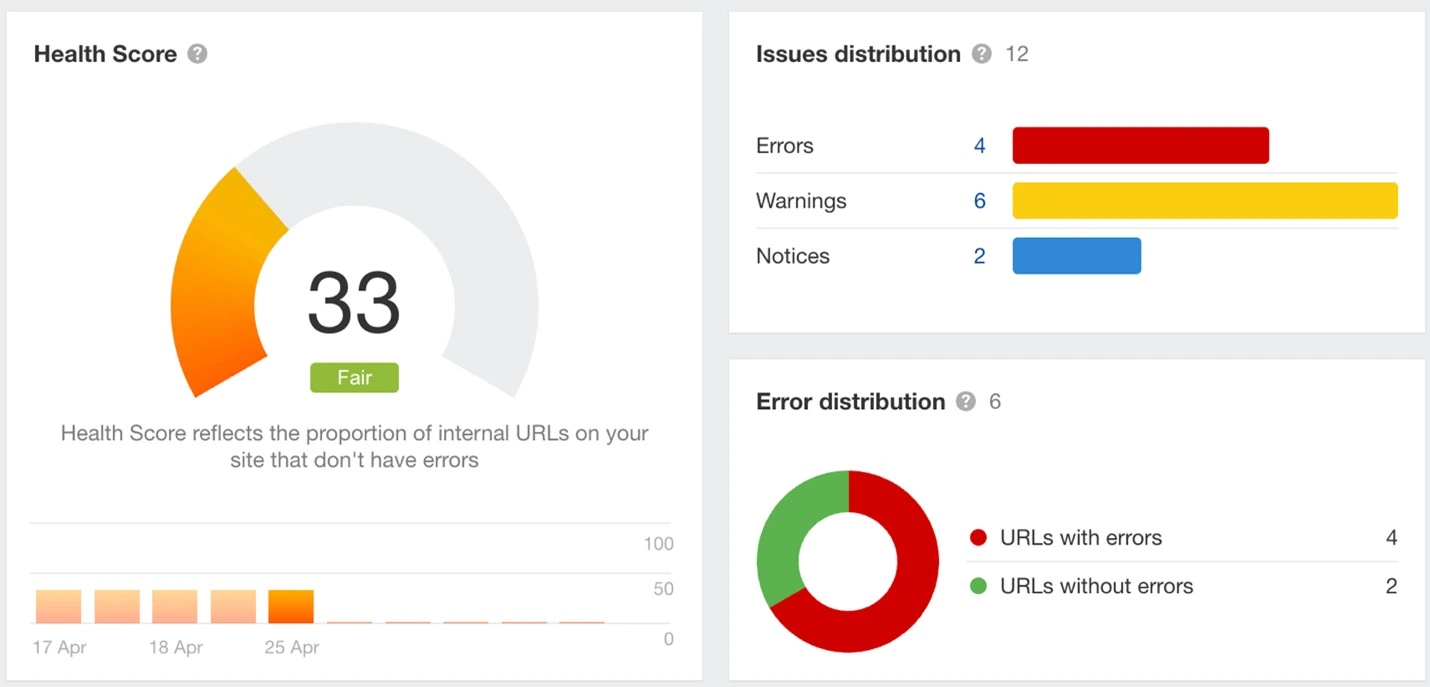
It's a sunny Tuesday morning, you've got your coffee and your itinerary for the day. You greet your colleague as you settle at your desk. Everything seems perfect, nothing can ruin your day today.
But then your SEO dashboard has 15 red notification pop-ups that say otherwise. All of them say that your rankings for several keywords dropped. But, how did this happen?
There's no need to have a panic attack because we're here to help you figure it out. Drops in organic traffic do happen even to the best marketers.
And in several cases, it might not even be anything you did or didn't do. Here are a few things to check for when your organic traffic looks like it dropped off a cliff.
Reasons for Drop in My Website's Organic Traffic?
1. Updates to Search Algorithms
One of the most common culprits related to this issue is usually search engine updates. More specifically, Google Search updates.
Even since the early days of SEO, Google has been notorious for its algorithm updates, sometimes without warning, that send websites careening down the rankings.

While core updates are not common these days like before, they can still happen. Changes to local searches or new competitors coming up can also trigger this drop in organic traffic.
When this does hit, most websites experience sharp declines in their traffic numbers. There might also be changes to mobile-first indexing on algorithms which can result in a drop-in rankings.
Another thing to watch out for in recent times is spam or AI content penalties. With the rampant use of AI to increase the amount of content on websites, many are at risk of this penalty.
2. Lost Important Backlinks
Backlinks are perhaps one of the most vital SEO areas that can influence your organic rankings.
If your website is linked comprehensively to high authority pages, there are chances that organic drops in traffic are due to changes in your profile.
Broken backlinks are one of the most common issues for a website. Depending on the number of people that visit your website through these backlinks, can have a huge effect on your organic traffic.
There is also the possibility that your competitors are spamming your website with negative backlinks resulting in huge penalties to your website.
You also need to be aware of your backlinks during website migration. When changing hosts or domains, chances are that your backlink structure can break.
Finally, check your guest posts and brand mentions because if they expire, it will hurt your backlink profile.
3. Drop-In Content Quality
While we talked about aspects that you have no control over in the last few points, content quality is something that you can do.
Website content can become outdated over time which makes them irrelevant for your potential clients. As clicks begin to reduce, your ranking can take a hit.
An important part of a content audit is checking your website for 'thin' content. Thin content means content that is low in quantity and quality which makes it less important for search engines.
Keyword stuffing is another area where content quality can drop and so does rankings. While creating content, it is also vital to check for structured information on a page.
This means content pieces should include FAQs, bullet points, and other related data to increase engagement.
4. More and Better Competition
With thousands of new brands entering the market every month, saturation has peaked. When a big competitor enters the market, naturally everyone's slice of the pie gets smaller.
These competitors might have the advantage of a better keyword profile, deeper content, and improved backlink profile.
And not just this, existing competitors might also be working on their PPC campaigns and improving website metrics.
Video is a platform that has been growing quickly and new players embracing this change can mean a drop-in rankings for others.
With more competitors, they are more likely to target the same keywords as your brand.
Last but not least, competitors optimizing their websites for newer NLP keywords and voice searches are bound to steal business from you.
5. Keyword Ranking Drops
Like many other parts of SEO, keywords too can drop in relevance over a period. If you don't audit and improve your keyword profile, your rankings are bound to thin out.
Even if keywords are updated regularly, you have to take care to ensure that they don't align completely with just commercial interests.
The highest-performing keywords will always be information-based rather than branded. An area to look at in your keyword profile is your long-tail keywords.
These can lose traction over time with the change in user behavior and industry trends. Over-optimized anchor text is also an issue that can cause lower traffic.
Finally, check if different pages on your website aren't cannibalizing keywords. Keyword Cannibalization refers to targeting the same keyword from multiple sources on the same website.
6. Sudden Indexing Issues
One of the most disastrous events that can happen to your website is your pages being deindexed. While the chances of this happening are slim, it still does.
This could happen when you're switching your CMS or using a new plugin.
Another scenario is when a website build that is under testing has the "noindex" tag and is pushed to being live.
There have been instances where indexing has not happened due to errors on Google's servers.

Server downtimes during crawling can also mean longer indexing times for your website or even not being indexed.
Remember that there are also deindexing penalties if you have spam or blackhat links on your website.
7. Changes to Technical SEO
What makes it difficult to track down the correct SEO issue is that there are so many! Broken links on your website like 404s can be a big reason why you're losing traffic.
Especially if that happens to be an important page like a landing or pillar page. Page load speed is another critical part of your SEO framework.
If a page's load speed is low, there is a high chance that people are going to click away from your website.
This results in a high bounce rate and lower dwell times both hurt your traffic numbers.
Tips to Recover Your Traffic
1. Check for Penalties and Website Security
The first and most obvious thing you should do is check your website for any penalties that it has incurred.
The easiest way to do this is by accessing Google Search Console and checking for any warning notifications for your website.
Scan your website for malware and content that links to spurious websites. A major source of bad signals is toxic backlinks.
Use the disavow tool to get rid of these. Tools like Ahrefs and Semrush can monitor your backlink profile and let you know in case of toxic backlinks.
Cloaking or bad redirects are other reasons for penalties on your website. Update your website security, especially for HTSSL, and avoid "mixed content" from your website.
In security terms, mixed content is when an HTTPS page loads less secure content from HTTP sources.
2. Keep Ahead of Algorithm Changes
While there are many things that you can do for issues that are within your control, algorithm updates are something that you need to keep track of.
There are several sources for this information and even from Google's official updates that you can use to track these changes.
For a more 'nuanced' view of these changes, you can also head to authority websites like Moz and Search Engine Land.
The advantage is that these brands give you updates and also discuss what it means for your website. In the long run, we think this form of news gathering can be more helpful for your website.
At your end, keep changing content formats and focus keywords to keep it fresh and competitive.
3. Audit and Fix Technical SEO Issues
The one area where a lot of issues are bound to crop up is technical SEO. Broken links are the highest priority when fixing a website.

Ensure that your website has zero occurrences of 404 errors as these can result in people not visiting your website anymore. Use tools like Lighthouse to improve page loading speed.
Loading speed is an important metric when it comes to page ranking and can be pivotal for traffic drops. Check all your pages for duplicate content and meta description and titles.
Tighten your crawl budget waste by identifying pages that are thin or have outdated content. You can set it to block them or add 'noindex' to them while you work on fixing the issue.
Other important issues that need fixing include hreflang errors and JavaScript rendering issues.
4. Update High-Traffic Content Pages
Pages that have a lot of traffic like landing pages or specific blog pages need regular content updates. Do your best to keep the page information as current to industry stats as possible.
Keep on adding new information that you find to these posts. It's also a great idea to base your changes based on constructive comments from readers.
Repurpose longer content formats to infographics or videos to get more engagement from these pages.
Optimize your website metadata and schema markup for featured snippets which can attract a lot of organic traffic in searches.
5. Work On Website UI/UX Issues
As users and businesses evolve, you might find that your website starts developing UI/UX optimization issues. The first sign of bad UI/UX is your pages having high bounce rates despite updating content.
It is a good idea to update navigation on your pages and revamp your website structure as needed. Changing it to a more user-friendly style can help get new users invested in your brand.
Only use pop-up messages when necessary as they can detract massively from the user experience if used incorrectly.
6. Track KPIs and Analytics
With the vast number of SEO performance metrics, it is easy to become overwhelmed. This situation becomes even more hectic when you need to improve all of these statistics!
But thankfully, with the advent of technology now there are reliable tools that can do all the legwork for you.
Google Analytics is a fantastic all-rounder that can help you get so many things done from choosing the right keywords to analyzing and forecasting trends in the marketing landscape.
Track keyword and backlink profiles through Ahrefs and SEMrush. These tools can also help with checking conversion rate changes and comparing your performance against your competitors.
7. Make Data-Driven Decisions
The end goal of your website revitalizing process should be to get as much data as possible and leverage that to make your decisions.
The tools that we've mentioned can give you a wealth of data. The key is interpreting them correctly and then using them to improve your traffic numbers.
Conduct lots of A/B testing for every aspect of your website. Take part in discussions both online and offline to get ideas on how you can get more organic traffic.
Prioritize changes to your website based on the impact it has on your users rather than just aesthetics.
Key Takeaways
● Check for Google Search algorithm changes regularly to prevent being left behind.
● Audit your website for technical SEO issues to prevent a sudden drop in traffic.
● Analyze competitor improvements and how they will impact your website.
● Revamp high-traffic content pages to keep audience engagement high.
● Stay updated on SEO trends through several reliable sources.
● Carry out data-driven changes for your website for the best results.